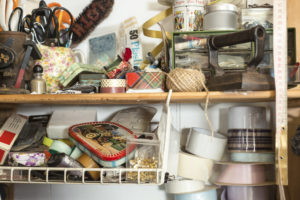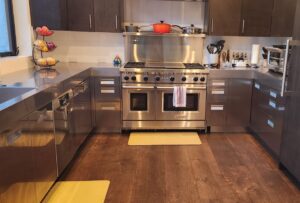
Should You Host a Yard or Garage Sale?
10 Questions to Ask Before You Decide
One question I hear often from clients—especially those who are moving, downsizing, or getting ready to sell their homes—is this:
“Should I hold a yard or garage sale?”
It’s a great question, and like most things, the answer depends on your goals, your available time and energy, and the items you’re trying to sell.
Estate Sale vs. Garage Sale: What’s the Difference?
Recently, I helped organize a moving sale for clients in their garage who were deeply invested in making sure their belongings ended up with people who would appreciate them. It was important to them that things didn’t just get tossed or donated without thought.
Before we decided to move forward with the sale, I reached out to a few estate sale professionals I know. Why? Because sometimes a professionally managed estate sale can bring in better returns, with far less effort on your part.
But here’s the catch:
Estate sale companies are selective. They typically only agree to manage a sale if there’s significant cumulative value in the items—enough to justify their time, labor, marketing, setup, and sometimes hauling. While not every item needs to be “high value,” the total has to add up. Most pros won’t take on a sale unless they believe they can earn $20,000 or more from it.
In my client’s case, even though they had lovely pieces, there wasn’t quite enough to make it worthwhile for the estate sellers. So we pivoted to a moving sale—and it went well! But it also came with a lot of effort.
Lessons from a Recent Moving Sale
Here’s a quick snapshot of what it took to pull off the sale:
-
1.5 days of setup
-
1 full day of selling
-
Post-sale cleanup, donation coordination, and leftover item removal
The sale featured high-quality household goods and furniture. In total, we brought in just over $2,300 (before my project management fees). Not bad! But it was physically demanding, and we ran into a few logistical hurdles:
-
Limited parking reduced foot traffic
-
Spotty internet made electronic payments difficult (thankfully, our client brought a portable Wi-Fi hotspot)
-
We needed extra hands to help load furniture into buyer vehicles
It was a success—but it wasn’t effortless.
10 Smart Questions to Ask Before Hosting Your Own Sale
If you’re considering a yard, garage, or moving sale, here are 10 questions to help you decide if it’s the right move for you:
1. Where will you safely hold the sale?
Garage, lawn, porch, driveway, or inside your home?
2. Is parking accessible for buyers?
Will visitors be able to stop and shop easily?
3. Do you have large furniture to move?
If so, do you have people to help with heavy lifting?
4. Do you have enough surfaces to display your items?
Tables, shelves, or furniture can make your sale more appealing.
5. Do you have help?
Sales go smoother (and are more fun!) when you’re not doing everything alone.
6. Do you have standout items to attract attention?
Artwork, collectibles, jewelry, or unique décor pieces can boost interest.
7. Will you post prices or accept offers?
Having a clear pricing plan reduces confusion.
8. What’s your plan for unsold items?
Will you donate them, hire a hauler, or schedule a pickup?
9. How will you accept payment?
Cash only? Venmo? Do you have a Wi-Fi connection to process payments?
10. What would make the sale worthwhile for you?
Set a goal. Is it about earning a certain amount? Clearing space? Connecting with your community?
Bottom Line:
Hosting a sale can be a great way to clear space, earn extra money, and feel good about where your things are going—but only if the time and effort feel worthwhile to you.
Need help thinking it through? Or want support managing a sale from start to finish? I’d be happy to help you plan what’s right for your situation.









